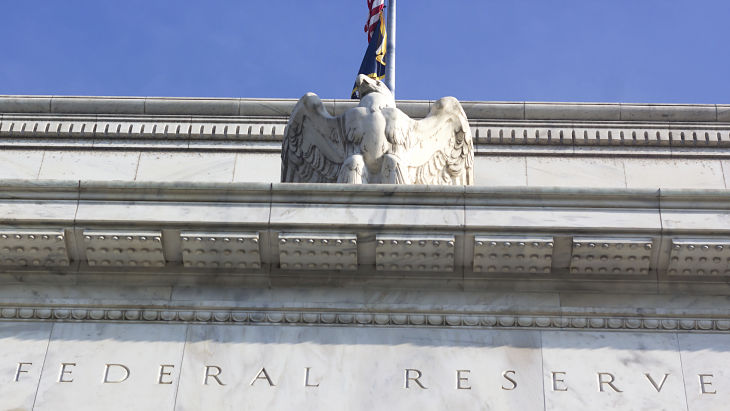Energy stocks rallied sharply on November 30th , as OPEC announced an agreement between member nations and Russia to cut production to 32.5 million barrels per day. Markets took this news in stride, pushing the Energy sector up +3.05% yesterday alone.
Rising rates are likely to continue to put pressure on defensive, high yielding sectors such as Telecoms, Consumer Staples, and Utilities, which lost -6.17%, -6.86%, and -6.68% in November alone, and -9.30%, -12.12%, and -7.04% in the past two months.
Fixed Income
November can only be described as a rout as far as the bond market was concerned. The infamous bond vigilantes, long given up for dead, came back to life in a big way sending yields higher across the curve. The trigger for this sell-off, of course, was the surprise election of Donald Trump for President.
Having run a campaign based upon wide-scale debt-financed government spending, markets appear to be taking him at his word and selling before the US debt/GDP ratio widens out even further.
With US/international yield differentials still heavily favoring the US, we do think there may be somewhat limited upside to yields in the near-term as sovereign debt in both Japan and the Eurozone still hovers around 0.0%. Municipal bonds were hit the hardest in November as talk of tax reform, specifically lower marginal tax rates, could potentially reduce the attractiveness of munis.
Currently trading at or above 100% of Treasury yields, municipal bonds would appear to offer excellent relative value in the fixed income space. For November, the ML Municipal Master Index fell -3.65% while the ML Municipal High Yield Index dropped -4.01%.
Somewhat illiquid in the best of times, during periods of stress, muni prices can decline rapidly. It’s likely the decline in prices is being exacerbated by the risk limits of bank trading desks, which in a Dodd-Frank world are severely limited as to the capital they may put at risk in support of market making. Although hit the hardest, munis weren’t alone in terms of seeing yields rise.
The ML US Corporate Master Index dropped -2.68%, equaling the decline of the ML Treasury/Agency Master Index, while the ML USD Emerging Market Sovereign & Credit Index dipped -2.76%. US high-yield actually fared okay, spurred on by the equity rally, with the ML US High Yield Master II Index falling only -0.39%, still up 15.2% for the year. Treasury Inflation-Protected securities have had a nice run of late after 10-year breakeven spreads dipped to 1.2% in February.
With break-evens now at 2.0%, TIPS still represent decent value in our eyes as we feel long-run inflation expectations still aren’t fully priced into the bond market.
Alternative Investments
Alternative Investments zigged and zagged in November after Donald Trump was elected President and OPEC actually agreed to cut production. Trump’s election victory comes on the hopes of renewed U.S. economic growth, through less regulation, lower taxes, and fiscal stimulus, which caused benchmark U.S. Treasury yields to soar.
This culmination of events pushed the U.S. Dollar, as measured by the DXY Index, to its highest monthly close since December 2002, up +3.1% on the month. Conventional wisdom would lead us to believe that if President-elect Trump is successful at implementing his policy agenda, and U.S. economic growth accelerates from here, that the U.S. Dollar will likely benefit and move higher.
The Dollar’s rise likely contributed to Gold’s dismal performance in November. After a knee-jerk reaction to President-elect Trump’s initial victory in the early hours of November 8th, Gold subsequently lost -4% by the end of the week, and ended the month down -8.1%. The back up in yields caused high yielding equity sectors such as Real Estate Investment Trusts (REITs), as measured by the FTSE NAREIT All REIT Index, to fall -2.2% during the period. REITs have shed -12.2% since the end of July, as interests rates have risen more than 100 basis points.
Interestingly, while REITs are typically sensitive to rising interest rates, they should benefit from stronger U.S. economic growth. Commodities, as measured by the Bloomberg Commodities Index, rose +1.3% on the month thanks to a sharp rise in West Texas Intermediate (WTI) crude oil prices, which jumped nearly +$5/bbl after OPEC announced that its member nations and Russia had agreed on a production cut.
WTI closed the month at $49.44/bbl, its highest monthly close since June 2015, up +5.5% on the month. While we were skeptical that a deal would be reached, it remains to be seen if participants will follow through with actual production cuts.
Furthermore, the U.S. remains the world’s swing producer, and with $50/bbl oil, more production may still come online globally. Finally, on the currency front, the US Dollar’s rise had ripple effects across the globe, as the Euro fell -3.6% against the Dollar on the month to close under $1.06 USD/EUR.
Many sell-side analysts are again calling for a return to parity, something we’re watching closely as we expect the Dollar’s rally to continue. The Yen weakened significantly against the Dollar, down more than -9.2% to 114.5 JPY/USD, a trend likely to continue into 2017.

